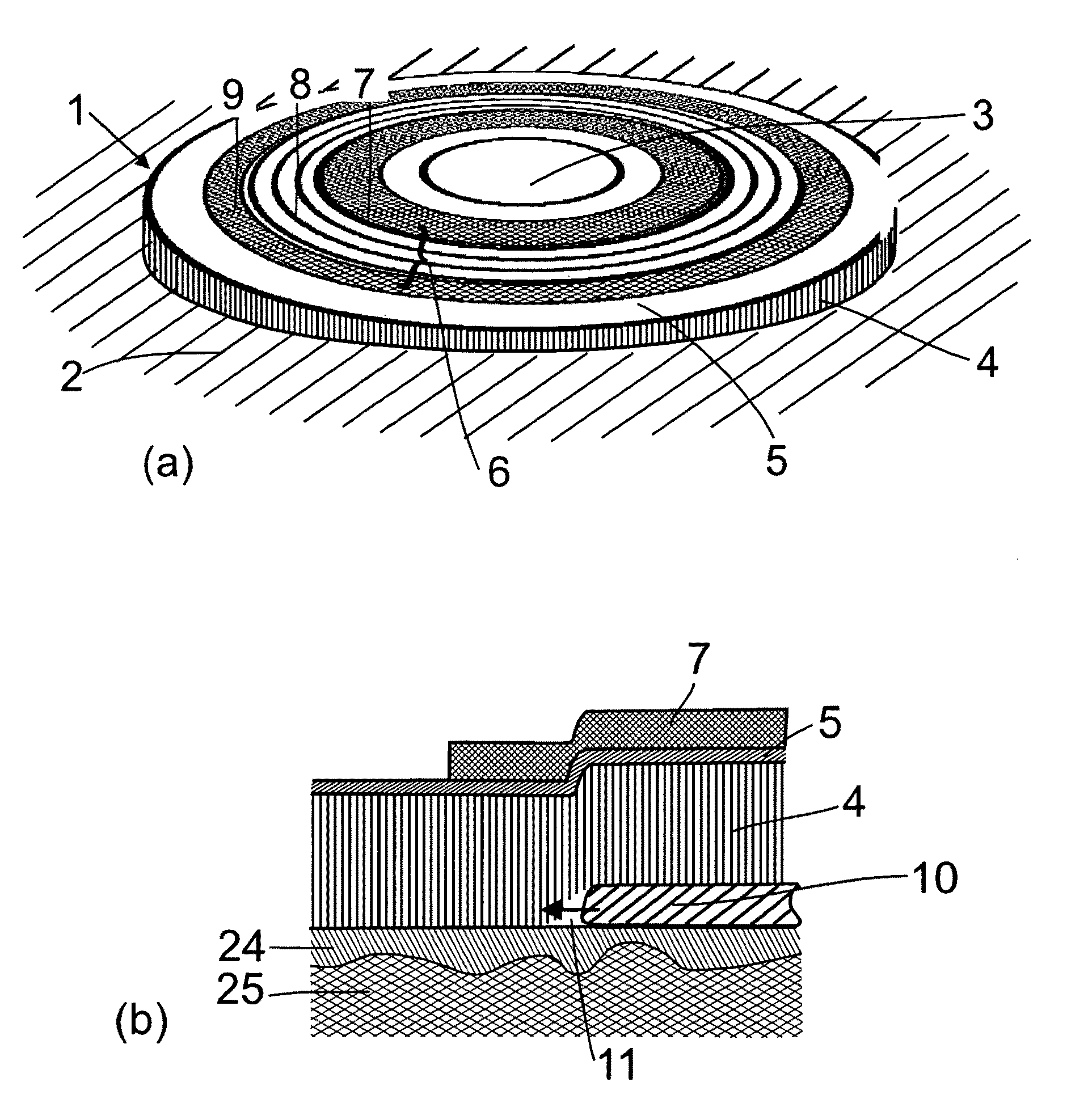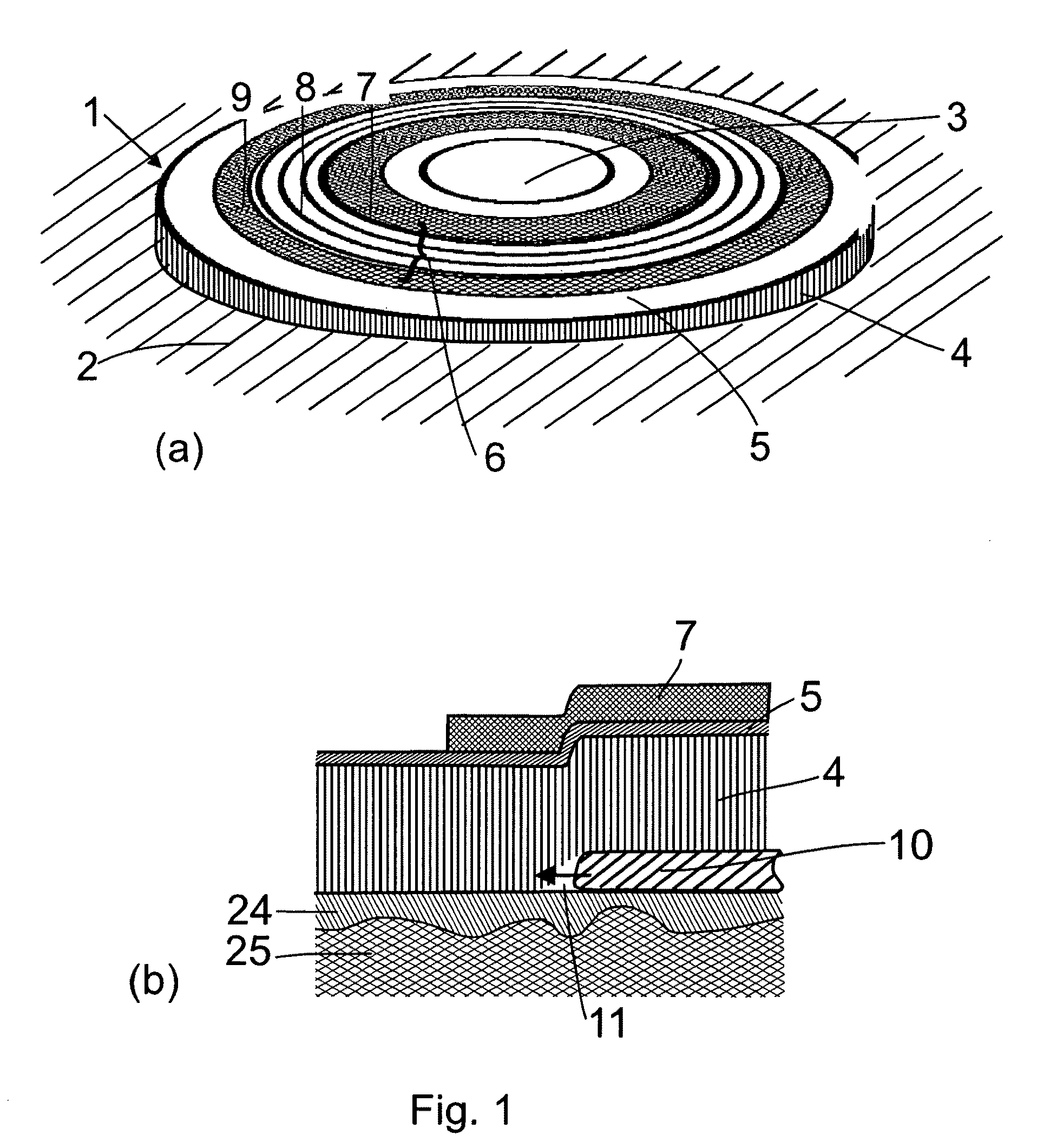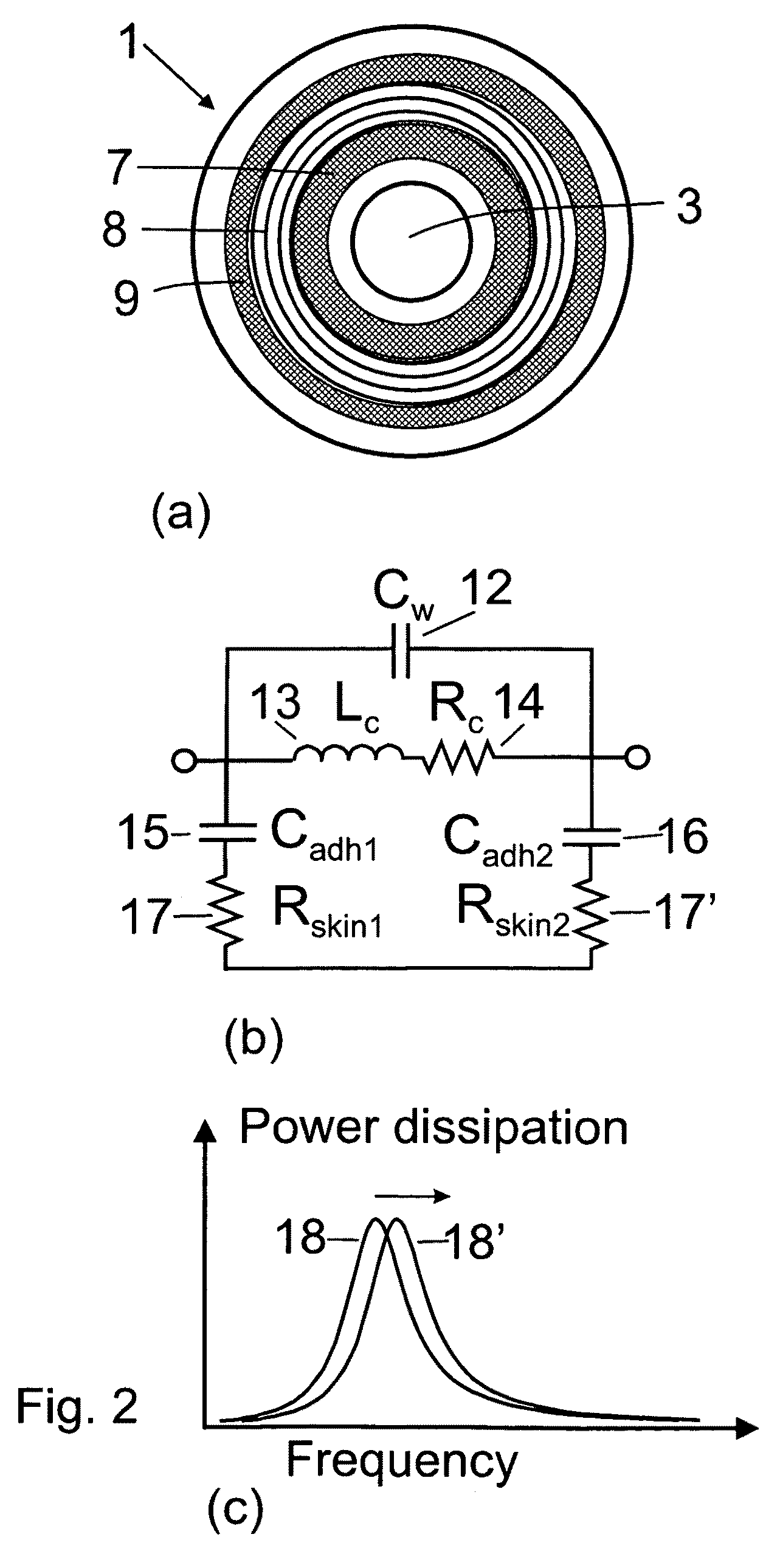Leak sensor
a leakage sensor and sensor technology, applied in the field of leakage sensors, can solve the problems of embarrassing and highly inconvenient leakage of ostomy bags for patients, wound care patients can have problems with leakage from dressings, and patients with ostomy bags experiencing leakage problems, etc., to achieve enhanced measurement accuracy, less sensitive, and less sensitive skin.
- Summary
- Abstract
- Description
- Claims
- Application Information
AI Technical Summary
Benefits of technology
Problems solved by technology
Method used
Image
Examples
example 1
[0136]In example 1 the sensor response of a leak sensor for an adhesive of an ostomy bag with the adhesive attached to the skin of a person is determined when a leak is occurs. The leak sensor comprises an electrically conductive pattern of two ring-electrodes on a top foil of a bandage and welded to an ostomy bag filled with 0.9% NaCl aqueous solution simulating body liquid. The configuration is illustrated in FIG. 3a. The electrically conductive pattern is connected to an external coil of 4.7 μH and a sine-wave function generator sweeps the frequency from 4 to 14 MHz. FIG. 9 shows a plot of an electrical response (voltage across the external coil) as function of frequency and FIG. 10 shows a plot of the resonance frequency as function of time, when a leak occurs between the adhesive and the skin of a person at the point of time indicated by an arrow 120. From resonance curves acquired with a sample frequency of 0.1 Hz, the resonance frequency has been determined using a first-mome...
example 2
[0137]In example 2, a sensor response of a leak sensor for an ostomy bag with an adhesive attached to the skin of a person is determined when the adhesive absorbs moisture. The leak sensor comprises an electrically conductive pattern of two ring-capacitors on a top-foil of a bandage and welded to an ostomy bag. The configuration is illustrated in FIG. 3a. In FIG. 11, the resonance frequency is plotted as function of time when the adhesive absorbs sweat from the skin of a cycling person. At the point of time 121, the person starts cycling from rest with 74 rotations-per-minute and at the point of time 122, the person stops cycling and rests. The resonance frequency has been determined using the method described in Example 1. Note that the sensor response to an adhesive absorbing sweat from a person is different from the response from a leak (see Example 1). The present invention can therefore discriminate between leaks and soaked adhesives.
example 3
[0138]In example 3, the sensor response is detected of a leak sensor based on two rings connected in parallel to the coil of an electrical resonance circuit with a top foil of a bandage welded to an ostomy bag filled with 0.9% NaCl aqueous solution simulating body liquid. The sensor is electrically connected to a sine-wave function generator sweeping the frequency from 1.4-4.6 MHz. The sensor configuration is illustrated in FIG. 3d apart from the fact that an external coil replaces the planar coil and that the two ring wires 36 and 37 in this example are touching the surface of the skin 24. In FIG. 12, the curve 123 is the response before occurrence of the leak and the curve 124 is after occurrence of the leak.
PUM
 Login to View More
Login to View More Abstract
Description
Claims
Application Information
 Login to View More
Login to View More - R&D
- Intellectual Property
- Life Sciences
- Materials
- Tech Scout
- Unparalleled Data Quality
- Higher Quality Content
- 60% Fewer Hallucinations
Browse by: Latest US Patents, China's latest patents, Technical Efficacy Thesaurus, Application Domain, Technology Topic, Popular Technical Reports.
© 2025 PatSnap. All rights reserved.Legal|Privacy policy|Modern Slavery Act Transparency Statement|Sitemap|About US| Contact US: help@patsnap.com



